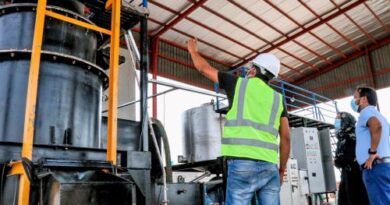IEA report says Bioenergy is the ‘Overlooked Giant’ in Renewable Resources

The International Energy Association or IEA, in its latest report on Renewable Energy, says that Modern Bioenergy will show the biggest growth among the renewables resources between 2018 to 2023. Bioenergy is predicted to underscore its role in building a more secure and sustainable energy system in the Renewable energy portfolio.
“Modern bioenergy is the overlooked giant of the renewable energy field,” said Dr. Fatih Birol, the IEA’s Executive Director. “Its share in the world’s total renewables consumption is about 50% today, in other words as much as hydro, wind, solar and all other renewables combined. We expect modern bioenergy will continue to lead the field and has huge prospects for further growth. But the right policies and rigorous sustainability regulations will be essential to meet its full potential.”
The agency defines bioenergy as the energy generated in the conversion of solid, liquid and gaseous products derived from Biomass made available on a renewable basis.
Other highlights:
- Renewable energy (RE) capacity additions reached a record of 178 GW in 2017
- Solar PV capacity is expected to grow by 600 GW until the end of the forecast period in 2023
- In the heating sector, the share of renewables is expected to grow from 10% in 2017 to 20% in 2023 with bioenergy contributing the largest share
- Among the three sectors, transport has the lowest penetration of renewables, projecting that renewable electricity in transport will increase by two-thirds by 2030
- In the next five years, renewables are expected to cover up to 40% of global energy consumption growth.
- The electricity sector has seen the most use of renewables, and in 2023 renewable energy sources will provide one-third of global electricity generation.
- Regarding bioenergy in the transport sector, the analysis notes that biofuel production is expected to increase by 15% to 165 billion liters per year by the end of the forecast period.
- Biofuels are expected to provide 90% of total renewable energy sources used in transport in 2023
- Wind remains the second-largest contributor to renewable capacity growth, according to the report
- China is predicted to surpass the EU in renewable energy capacity by 2023
The IEA report’s prediction on Renewables, are in line with other global agencies, says that solar PV alone will represent half of the additional growth in renewables driven by faster cost reductions, which improve the technology’s global competitiveness.
Asian countries account for the most growth in biofuel output over the forecast period: China, India, and ASEAN countries combined represent half of the global expansion in biofuel production. Latin America is responsible for 45% of production growth, which comes principally from Brazil. India is forecasted to produce 1.5 million liters of ethanol by 2023.
The report adds even with renewable energy technologies becoming increasingly competitive, appropriate policies and market design are critical to their growth. It assumes greater supportive government measures to fully untap the potential of renewable energy resources to improve waste management, air quality and in general, the lives of people.




